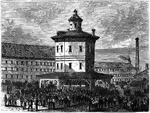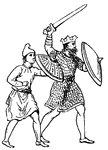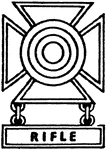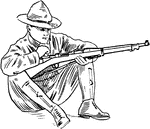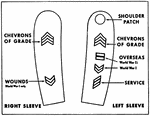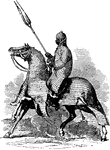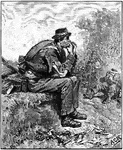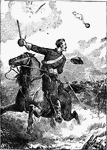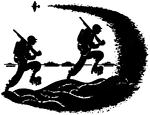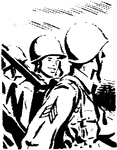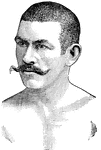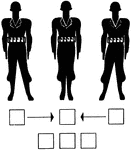Browning Automatic Rifle
The M1 Garand (officially the United States Rifle, Caliber .30, M1) was the first semi-automatic rifle…
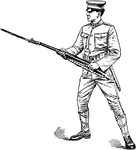
Left-Handed Rifle
"As additional instruction, the men may be permitted to wield the rifle left handed, that is on the…
M1 Garand Rifle
The M1 Garand (officially the United States Rifle, Caliber .30, M1) was the first semi-automatic rifle…

Six-inch Breech Loading Rifle
Rifle on the United States cruiser, Atlanta. The illustration shows a detailed view of the rifle, specifically,…
Springfield M1903 Rifle
"U.S. Rifle, CAL .30 M1903 (Springfield)." -War, 1944 The Springfield M1903, formally the United States…

Right Flank March
An illustration of a right flank march. "For example, at the command, 1. By the right flank, 2. March,…

Right Flank March
An illustration of a right flank march. "For example, at the command, 1. By the right flank, 2. March,…

Roman Eagle
"Eagle, as a military standard, was adopted by the Romans, and even by nations preceding them in history.…
Saber Return
"Officers and noncomissioned officers armed with the saber, when mounted, return saber without using…
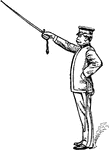
Drawn Saber
"When publishing orderes, calling the roll, etc., the saber is held suspended from the right wrist by…

Drawn Saber
"When arms are brought to the order the officers or enlisted men with the saber drawn order saber."…

Marching with Saber
"In marching in double time the saber is carried diagonally across the breast, edge to the front; the…
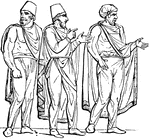
Sagum
"The sagum was open in the front, and usually fastened across the shoulders by a clasp. The form of…
Covered Sap
In military affairs, a narrow ditch or trench by which approach is made to a fortress or designed place…
Double Sap
In military affairs, a narrow ditch or trench by which approach is made to a fortress or designed place…
Rectangular Sap
In military affairs, a narrow ditch or trench by which approach is made to a fortress or designed place…
Single Sap
In military affairs, a narrow ditch or trench by which approach is made to a fortress or designed place…

Section
Signal to inform the troops that the next signal will be directed at a certain 'section' rather than…

Kite Shield
A Norman kite shield of the 10th or 11th century, considered the beginning of the High Middle Ages.
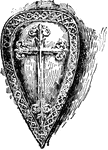
Medieval Shield
A shield of mounted men-at-arms from the first half of the 13th century, considered the High Middle…

Sighting rest for rifle
"Take an empty pistol ammunition box or a similar well-made box, remove the top and cut notches in the…

Soldier with Rifle
"In resuming the order from any position in the manual, the motion next to the last concludes with the…
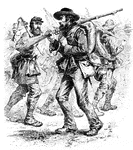
Confederate Soldiers
An illustration of a group of confederate soldiers walking in full uniform and armed.
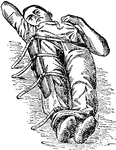
Military Splint
"The carbine boot may be used to advantage in splinting fractures of the thigh and leg." — Moss, 1914

Military Splint
"The carbine boot may be used to advantage in splinting fractures of the thigh and leg." — Moss, 1914

Squad
"Extend the arm horizontally toward the platoon leader; swing the hand up and down from the wrist."…

Squad
Signal to inform the troops that the next signal will be directed at a certain 'squad' rather than everyone.

Squad Right About, March
"Extend the arm vertically above the head; carry it laterally downward to the side and swing it several…
Stack Arms
"Each even number of the front rank grasps his piece with the left hand at the upper band and rests…

Stack Arms
"Each even number of the front rank grasps his piece with the left hand at the upper band and rests…

Stack Arms
"Throws the butt about 2 feet in advance of that of his own piece and opposite the right of the interval,…
Stack Arms
"Each odd number of the front rank raises his piece with the right hand, carries it well forward, barrel…

Stack Arms
"He then turns the barrel outward into the angle formed by the other two pieces and lowers the butt…
Stock, right side view
"The parts are the butt, A; small, B; magazine well, C; barrel bed, D; air chamber, E, which reduces…
Stock, top view
"The parts are the butt, A; small, B; magazine well, C; barrel bed, D; air chamber, E, which reduces…
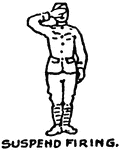
Suspend Firing
Order given to troops instructing them to stop firing. Weapons are held, locked and loaded so that they…
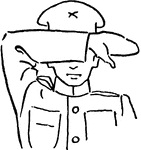
Suspend Firing
"Raise and hold the forearm steadily in a horizontal position in front of the forehead, palm of the…

Take Aarms
"Each even number of the front rank diengages and detaches his piece by turning it to the left." —…
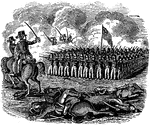
They Conquer Who Endure
"In close array, this firm united band / Guarded on every point will boldly stand; / Their foes attack…
Trail Arms
"Raise the piece, right arm slightly bent, and incline the muzzle forward so that the barrel makes an…

